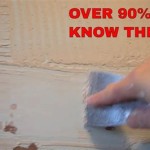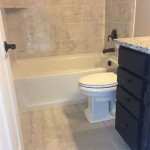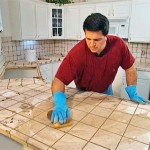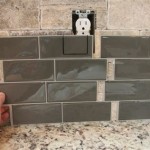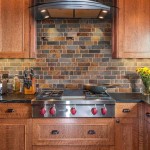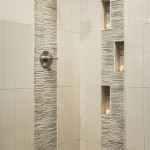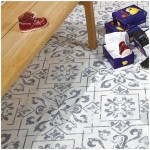How to Remove Stubborn Stains from Bathroom Tiles
Bathroom tiles are susceptible to various types of stains, from hard water deposits and soap scum to mildew and even rust. These blemishes can make your bathroom appear dull and unhygienic. Thankfully, with the right approach and cleaning agents, you can effectively remove stubborn stains and restore the pristine look of your bathroom tiles. This article outlines effective methods for tackling common bathroom tile stains, equipping you with the knowledge to maintain a sparkling and inviting bathroom space.
Understanding the Stain
Before embarking on any stain removal process, it is crucial to identify the type of stain you are dealing with. Different stains require different cleaning agents and techniques. Some common bathroom tile stains include:
- Hard water stains: These appear as white or chalky deposits, often caused by minerals in the water.
- Soap scum: This is a greasy film that builds up over time, usually appearing as a hazy, white residue.
- Mildew: This black or dark green fungus thrives in damp environments and often appears as mold-like patches.
- Rust stains: These appear as reddish-brown spots, commonly caused by iron particles in the water.
Once you have identified the type of stain, you can choose the appropriate cleaning method and products.
Effective Stain Removal Techniques
Here are some tried-and-true methods for removing stubborn bathroom tile stains:
1. Hard Water Stains
Hard water stains can be tackled using a variety of methods:
- Vinegar: White vinegar is a natural and effective solution for removing hard water stains. Pour undiluted vinegar onto the stain, let it sit for 15-20 minutes, then scrub with a non-abrasive sponge.
- Baking soda: Create a paste of baking soda and water, apply it to the stain, let it sit for a few minutes, and then scrub with a damp sponge.
- Commercial cleaners: Many commercial hard water stain removers are available. Follow the manufacturer's instructions carefully.
2. Soap Scum
Soap scum is a greasy residue that can be removed with the following steps:
- Dish soap: Mix a few drops of dish soap with warm water and apply it to the affected area. Scrub with a sponge and rinse thoroughly.
- Baking soda: Create a paste of baking soda and water and apply it to the soap scum. Allow it to sit for a few minutes, then scrub and rinse.
- Commercial cleaners: Various commercial soap scum removers are readily available. Follow the product instructions for best results.
3. Mildew
Mildew requires a more targeted approach:
- Bleach: Dilute bleach with water (usually a 1:10 ratio) and apply it to the mildew. Allow it to sit for 10-15 minutes, then scrub and rinse thoroughly. Always wear gloves and work in a well-ventilated area when using bleach.
- Tea tree oil: Mix a few drops of tea tree oil into a spray bottle filled with water. Spray the affected area, let it sit for 15-20 minutes, and then scrub with a sponge. Tea tree oil has natural antifungal properties.
- Borax: Mix borax with water to create a paste. Apply the paste to the mildew, let it sit for 30 minutes, and then scrub and rinse.
4. Rust Stains
Rust stains can be tricky to remove, but the following methods can be effective:
- Lemon juice: Apply lemon juice to the rust stain and let it sit for 30 minutes. Scrub with a sponge and rinse thoroughly.
- Salt and lemon juice: Make a paste of salt and lemon juice and apply it to the stain. Let it sit for 1 hour, then scrub and rinse.
- Commercial rust remover: Many effective commercial rust removers are available. Follow the manufacturer's instructions carefully.
Prevention Tips
Preventing stains is easier than removing them. Here are some tips to keep your bathroom tiles sparkling clean:
- Regular cleaning: Clean your bathroom tiles regularly to prevent the buildup of dirt, grime, and soap scum.
- Ventilation: Ensure good ventilation in your bathroom to reduce moisture and prevent mildew growth.
- Water softener: If you have hard water, consider installing a water softener to reduce mineral deposits.
- Squeegee: After showering, wipe down the walls and floor with a squeegee to remove excess water and prevent water spots.

3 Best Ways To Get Rid Of Hard Water Stains From Bathroom Tiles Kent

How To Remove Stains From Bathroom Tiles

How To Remove Stains From Bathroom Tiles

3 Ways To Remove Stains From Tiles Wikihow

Home Remedies To Remove Bathroom Tiles Stubborn Stains

How To Remove Hard Water Stain From Tile And Grout

How To Remove Hard Water Stains From Tile And Grout Woodard

10 Ways To Clean And Remove Stains From Bathroom Tiles Bria Homes

3 Best Ways To Get Rid Of Hard Water Stains From Bathroom Tiles Kent

2 Ways To Remove Hard Water Stains From Tiles
Related Posts

